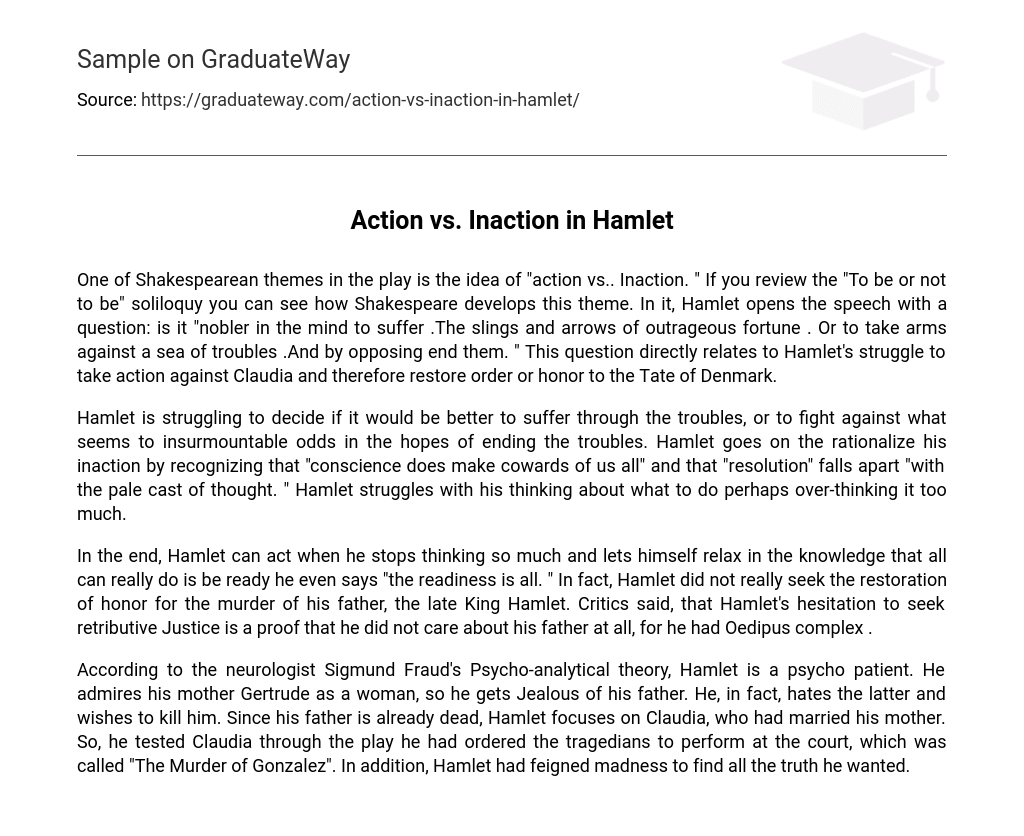One of Shakespearean themes in the play is the idea of “action vs.. Inaction. ” If you review the “To be or not to be” soliloquy you can see how Shakespeare develops this theme. In it, Hamlet opens the speech with a question: is it “nobler in the mind to suffer .The slings and arrows of outrageous fortune . Or to take arms against a sea of troubles .And by opposing end them. ” This question directly relates to Hamlet’s struggle to take action against Claudia and therefore restore order or honor to the Tate of Denmark.
Hamlet is struggling to decide if it would be better to suffer through the troubles, or to fight against what seems to insurmountable odds in the hopes of ending the troubles. Hamlet goes on the rationalize his inaction by recognizing that “conscience does make cowards of us all” and that “resolution” falls apart “with the pale cast of thought. ” Hamlet struggles with his thinking about what to do perhaps over-thinking it too much.
In the end, Hamlet can act when he stops thinking so much and lets himself relax in the knowledge that all can really do is be ready he even says “the readiness is all. ” In fact, Hamlet did not really seek the restoration of honor for the murder of his father, the late King Hamlet. Critics said, that Hamlet’s hesitation to seek retributive Justice is a proof that he did not care about his father at all, for he had Oedipus complex .
According to the neurologist Sigmund Fraud’s Psycho-analytical theory, Hamlet is a psycho patient. He admires his mother Gertrude as a woman, so he gets Jealous of his father. He, in fact, hates the latter and wishes to kill him. Since his father is already dead, Hamlet focuses on Claudia, who had married his mother. So, he tested Claudia through the play he had ordered the tragedians to perform at the court, which was called “The Murder of Gonzalez”. In addition, Hamlet had feigned madness to find all the truth he wanted.





